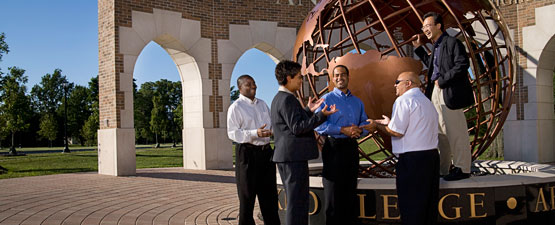Professional Dissertations DMin
Date of Award
1993
Document Type
Project Report
Degree Name
Doctor of Ministry
College
Seventh-day Adventist Theological Seminary
Program
Doctor of Ministry DMin
First Advisor
Miroslav M. Kis
Second Advisor
Douglas R.Kilcher
Third Advisor
James J. North, Jr.
Abstract
Problem
Attendance at the La Sierra Collegiate Church worship services declined for several years, then membership began to decline. Programs, finances, and morale were negatively impacted. The church had lost any evangelistic fervor it may have had in the past. The Collegiate Church lacked a focus for ministry other than the education of the children of the members, in spite of efforts at worship renewal by a new senior pastor after his arrival in 1988. There was no mission or purpose. There was no vision and work for God’s redemption in the world.
Method
A questionnaire based on David Moberg’s church life-cycle model of five stages was used to survey the congregation, to determine why the Collegiate Church was not growing. Then a self-evaluation strategy was used to help the church focus on its purpose. The members through a congregational assessment evaluated the strengths and weaknesses of the Collegiate Church, and the Church Board devoted considerable time to studying the purpose of the church, taking special note of the results of the church life-cycle survey and the congregational assessment.
Results
The name of the church was changed to La Sierra University Church. Also, a plan for implementing change was adopted and put into action. That plan called on the department and committee leaders of the church to prepare plans for their area of responsibility, based on a revised Mission Statement and thirteen new goals adopted by the Church Board after its study of the purpose of the Collegiate Church. Follow-up called for periodic self-evaluation by the departments and committees, with periodic verbal or written reporting to the congregation, of the progress being made in meeting their goals and plans.
Conclusions
By 1990, the La Sierra Collegiate Church had evolved through its life cycle to the point where it was not growing because it had become institutionalized. The members were dissatisfied with the church and perceived it to be worldly. Work on clarifying the purpose of the church brought no significant change. No compelling vision or purpose surfaced which the leaders of the church and the congregation could identify with. Although a consensus on the mission and goals of the Collegiate (University) Church was developed, there was no renewal or revitalization of the church. To remain viable, the La Sierra University Church will need to continue seeking God’s vision for the church.
Subject Area
Church growth--Seventh-day Adventists; La Sierra University Church (Riverside, Calif.)
Recommended Citation
Whited, Bradley K., "A Church Seeking Vision: A Study to Determine Which Stage of its Life Cycle the La Sierra Collegiate Church Is in, to Help the Church Clarify its Purpose and Goals and Grow Numerically" (1993). Professional Dissertations DMin. 687.
https://dx.doi.org/10.32597/dmin/687
https://digitalcommons.andrews.edu/dmin/687
Creative Commons License

This work is licensed under a Creative Commons Attribution-NonCommercial-No Derivative Works 4.0 International License.
DOI
https://dx.doi.org/10.32597/dmin/687
Files over 3MB may be slow to open. For best results, right-click and select "save as..."



